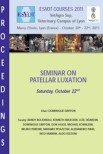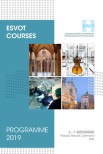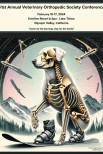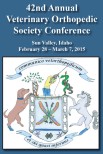To investigate the frequency and factors of medial meniscal injury (MMI) associated with cranial cruciate ligament rupture (CrCLR) in toy breed dogs by arthroscopic evaluation.
Toy breed dogs (≤5 kg) diagnosed with CrCLR using stifle arthroscopy were included. Age, sex, body weight, breed, medial patellar luxation grade, degree of lameness at diagnosis, and duration of lameness until diagnosis were obtained from medical records. The tibial plateau angle was evaluated using preoperative radiography. On arthroscopic evaluation, degree of CrCLR was classified as partial or complete; MMI was classified as no, mild, or severe injury. MMI grade was used as objective variable; ordered logistic regression was used, and the final model was created using forward-backward stepwise selection.Overall, 202 stifles of 178 dogs were evaluated. Arthroscopic evaluation revealed partial and complete CrCLR, and MMI in 58, 144, and 74 stifles, respectively.
MMI with mild and severe damage was noted in 50 and 24 stifles, respectively. Final model included body weight, lameness score, and degree of cranial cruciate ligament damage. A grade 3 lameness score had a higher MMI factor than grade 1. Higher body weight was associated with MMI, and complete rupture had a higher MMI factor than partial tears.Arthroscopic evaluation of CrCLR cases showed MMI in toy breed dogs.
Cases with complete CrCLR or severe lameness are at high risk of MMI and should be evaluated cautiously.









